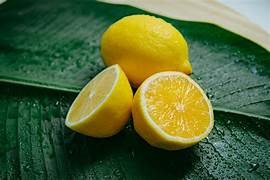Lemon

The fruit color is green to bright yellow at maturity and is with or without a collar at the neck. Thickness and smoothness of rind vary among varieties and lemons are either seedless or seedy. Some varieties have large and prominent nipple, while others have very small, inconspicuous nipple. Lemons are shaped like an oval with a bump on one end. Their rind, or skin, is thick. It starts out green and turns yellow when the fruit is ripe. Inside each fruit is juicy flesh called pulp. Lemon is a plant. The fruit, juice, and peel are used to make medicine. Lemon is used to treat scurvy, a condition caused by not having enough vitamin C. Lemon is also used for the common cold and flu, H1N1 (swine) flu, ringing in the ears (tinnitus), Meniere’s disease, and kidney stones Limes are small, round, and green, while lemons are usually larger, oval-shaped, and bright yellow. Nutritionally, they’re almost identical and share many of the same potential health benefits. Both fruits are acidic and sour, but lemons tend to be sweeter, while limes have a more bitter flavor. Lemons contain about 50 milligrams of vitamin C, which is over half the amount of vitamin C needed in your daily diet. Vitamin C is an antioxidant, which helps protect cells from damage. Vitamin C also helps your body make collagen for your skin, helps your body absorb iron, and supports your immune system. Lemons contain about 50 milligrams of vitamin C, which is over half the amount of vitamin C needed in your daily diet. Vitamin C is an antioxidant, which helps protect cells from damage. Vitamin C also helps your body make collagen for your skin, helps your body absorb iron, and supports your immune system.